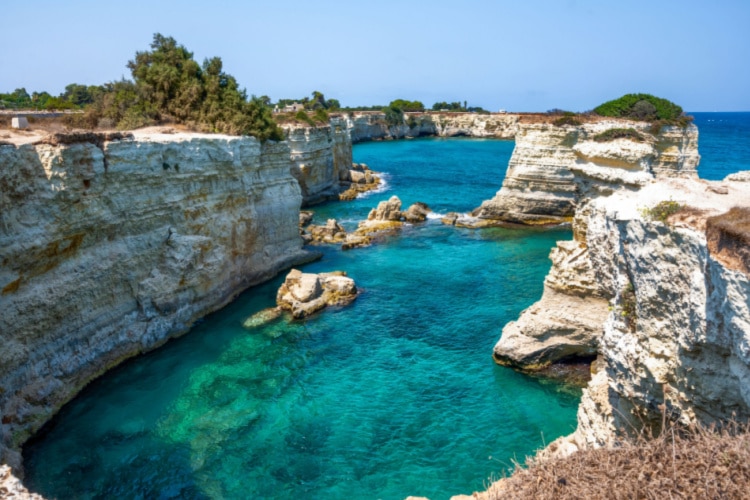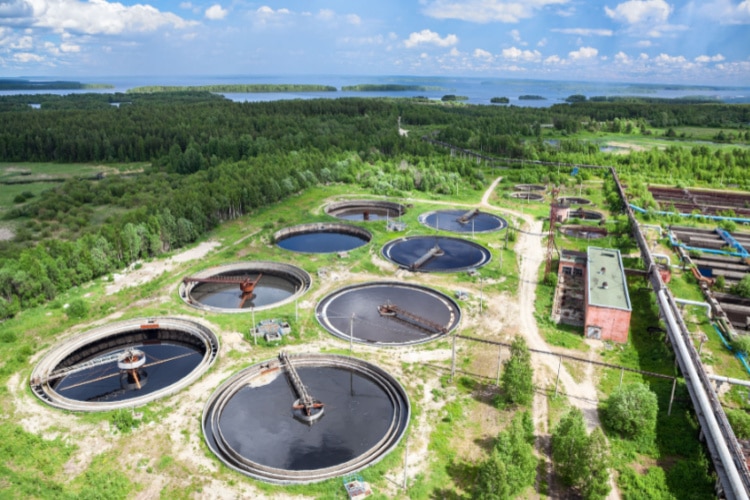Generally, Milan’s tap water is safe to drink unless it is from a poorly maintained treatment facility or buildings with corroded pipes. However, it’s not uncommon for most residents to prefer drinking bottled water or have a water filter installed.
In this article, we’ll discuss:
- Milan water quality report
- Source of Milan tap water
- How tap water is treated in Milan
Milan Water Quality Report: What Is in the Water?
Milan is located off the Mediterranean coast with a shoreline separating it from the Sardinia Peninsula. You’ll find the Lungau River, the Ligurian Sea, and Lake Como around the city.
A considerable chunk of the city is covered by coastal plains and mountain ranges, and pine forests.
Milan’s water supply comes from various sources, including groundwater, lakes, and rivers. However, the city’s groundwater is largely contaminated in certain areas and of low quality in others.
In Milan, where torrential downpours are regular, it is typical to see overflowing sewers. This contaminates the water supply for people who live in the city and neighbouring areas. Waste products such as industrial pollutants, agriculture, and animal excrement also contribute to the contamination.
Milan’s local water authority undertakes audit and reports the results to the Italian Health authorities for approval. While they may deem the water safe for consumption, it does not imply that it is purest or tastes good.
The tap water (in some areas) may also have:
- A chlorine taste/odor
- A high concentration of limescale
- An uncontrolled concentration of microplastics
- Contaminants from the building’s plumbing
It is common to find many households in Milan stocked with bottled water or have installed a water filtration system.
Is the Water Hard or Soft?
Milan’s water texture varies greatly by distribution area. For instance, the hinterland of Milan has a softer water foundation. In contrast, the city center’s tap water is hard with relatively high calcium levels. These calcium levels could explain why most locals prefer bottled water or using filtered water to make beverages such as tea or coffee.
Where Does Milan Gets its Water From?
Milan needs 58 billion cubic meters of water each year, of which 28% comes from groundwater and 72% from surface water.

Milan lies on top of one of Italy’s largest aquifers, spreading over the Po Valley, allowing large-scale agriculture and significant industrial activity in this region.
During the 19th century, the residents of Milan began to draw their drinking water from the aquifer beneath the city, parallel with public interventions to cover up the old canals, which were a concern to public health. Since then, this city has drawn its tap water from the 433 wells and distributes it through 28 power stations.
The city also receives water from adjacent areas such as Lecce, Srinagar, Genoa, Friuli, Venice, and Palermo.
How Tap Water Is Treated in Milan
Milan’s water treatment system is up to date and generally complies with the EU water directive, which is especially relevant to the water supply of major cities. However, its tap water treatment is strictly regulated.
According to Legislative Decree 31/2001, tap water for human consumption in Italy must meet all 64 microbiological, chemical, physical, and radiological standards.

The CAP (a publicly funded company) is in charge of serving the City of Milan. It owns and administers 60 wastewater treatment facilities (WWTPs) ranging in size from small to large, which serve over 2.5 million people in Milan’s peri-urban area.
These WWTPs exist primarily in agricultural areas. The water is subjected to five quality inspections daily and disinfected with chlorine. This is required to guard against infections such as bacteria and viruses.
All tap water must contain at least 0.2 milligrams of chlorine per liter. Greater quantities of chlorine (0.5 mg/l or higher) mixed with hard water generally make the tap water taste awful.
However, depending on regional needs and the water network, chlorine concentration changes by season. Therefore, the water taste might be different throughout Milan.
Do They Have the Cleanest Tap Water?
In most parts of Milan, you can drink the tap water as it is, except in areas labeled “Aqua non potable.” However, this doesn’t mean that it is the cleanest tap water.
It is wise to test the tap water quality before you drink. Get in touch with the local water lab, and they’ll send you a test kit and instructions.
Send a sample back to them, and you should receive the results within a few weeks. You can also access data regarding tap water quality from this website.
PRO TIP: Always take extra caution because, even though the water is deemed safe to drink when it leaves the sewage treatment facility, it may pick up contaminants en route to your home. Always check with the locals or restaurant waiters about the water quality.
Bottom Line
Opinions regarding tap water in Milan are mixed. Some locals prefer drinking tap water because it saves them money, while others prefer buying bottled water because it’s affordable and it tastes better. However, no scientific evidence supports the claim that bottled water is safer than tap water.
Still, the fact remains that Milan tap water is safe for human consumption even though there may be a variations in taste or texture.